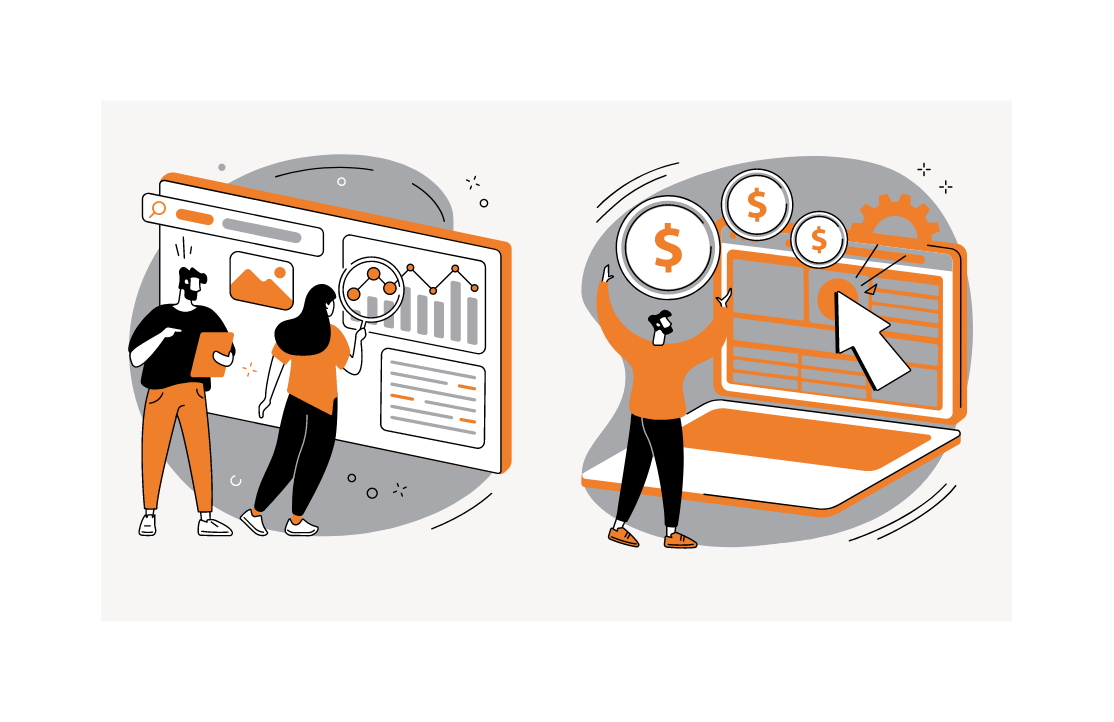Leveraging paid ads and SEO is essential for developing an effective approach to digital marketing.
Paid ads such as Pay-Per-Click (PPC) campaigns allow brands to target customers who are actively looking for their services or products.
On the other hand, Search Engine Optimization (SEO) helps brands increase organic traffic by optimizing websites according to search engine ranking algorithms.
Both techniques require careful planning and monitoring in order to maximize brand visibility and ROI (Return on Investment), but understanding them will give any brands a competitive edge in today’s digital world.
Let’s explore the benefits of using both paid ads and SEO to improve ROI and brand visibility online.
The Benefits of Paid Ads
Paid ad campaigns are a great way to quickly promote your product or service online.
It allows you to target specific audiences in order to get the most out of every dollar spent.
For example, if you’re launching a new product, you could use paid ads to target potential customers who have already expressed interest in similar products or services.
This type of targeted advertising can be extremely powerful since you know exactly who is seeing your ad, when they’re seeing it, and how often they’re engaging with it.
The Benefits of SEO
SEO is an important part of any marketing strategy because it helps ensure that your website is visible on SERPs.
This means that when someone searches for a keyword related to your product or service, there’s a greater chance that they will see your website at the top of the SERPs.
Additionally, by optimizing for certain keywords you can ensure that you’re reaching the right people; those who are actually interested in what you have to offer.
Optimizing content on-page (such as meta tags, titles, and descriptions) as well as off-page (such as link building), can help make sure that your website reaches more potential customers than ever before.
Identifying your target audience
Achieving success in any digital marketing strategy starts with understanding who your potential customers are, and what their interests and needs are.
This enables you to create campaigns tailored specifically for them.
To identify your target audience, you can use tools like Google Analytics or survey websites such as Survey Monkey to collect data about the characteristics of those who visit your website and interact with it.
You can also leverage social media to discover consumer trends from relevant conversations, then use this information combined with insights from surveys or analytics platforms to develop an ideal customer profile.
With a clear idea of who your target audience is and what they look for when interacting with a brand online, you’ll be able to build an effective digital marketing plan that will increase visitor engagement and conversion rates while boosting ROI.
Develop a Keyword Strategy
Using the right keywords on your website or in content related to your brand helps search engines such as Google identify relevant pages, which increases the chances of users finding what they’re looking for when they conduct searches.
When creating a keyword strategy, you should first consider what words or phrases your target audience might use to find information specific to your website.
To do this, look at the questions people ask most frequently about your products or services and make sure those words are included in your keyword list.
You can also use tools such as Keyword Research Tool (KRT) to help build an extensive list of potential keywords by exploring related terms – considering both “head” terms (short words that give basic information about niche topics) and “long-tail” keywords (phrases that are more specific).
Craft a Compelling Ad Copy
Crafting compelling ad copy is an essential part of any digital marketing strategy, as it can help draw potential customers to your website and increase ROI.
To create effective ad copy, you need to think about the needs and interests of your target audience, then write in a way that resonates with them.
Once you’ve identified key insights into buyer preferences and interests, craft messaging designed to connect with that demographic by highlighting the benefits they’re looking for when making a purchase decision.
You should also consider using power words in your ad copy that evoke emotion – such as “imagine” or “discover” – as this can help make the message more powerful and memorable.
Additionally, ensure that keywords related to what you sell are integrated throughout the text (in both head terms and long-tail terms) so search engines will recognize them when someone searches for them on SERPs.


Set Reasonable Budgets and Objectives
To get the best results from your campaigns, you should be realistic with the amount of money that you are willing to invest and how much time you are able to dedicate to planning and executing tactics.
Start by looking at your current budget or projected budget and determine where there is room for improvement in order to allocate funds toward a digital marketing campaign.
While large established companies may have more sizable budgets available, smaller brands may need to get creative with their monetization strategies.
Consider partnering with other companies or start-ups that have complementary products or services in order to generate additional revenue streams without heavy upfront investments.
Once you have determined what kind of budget is necessary, set clear objectives using key performance indicators (KPIs).
For example, if the goal is generating leads then look at metrics such as the total number of website visitors versus leads generated from organic sources; website conversions from paid ad campaigns; cost per lead; etc.
Monitor KPIs and Make Adjustments
Once you have launched your digital marketing campaigns, it is important to monitor and analyze the results in order to optimize performance.
To get started, track key metrics such as website visitors, conversions from paid ad campaigns, cost per lead/conversion, etc.
This will give you an idea of how successful each tactic has been and where improvements can be made in order to maximize ROI.
Paid Ads and SEO are powerful tools that enable you to strategically reach your target audience, increase traffic, build brand awareness, and grow your brand.
With an understanding of the basics and proper planning, you can maximize these great advantages to reach success in your online campaigns.




